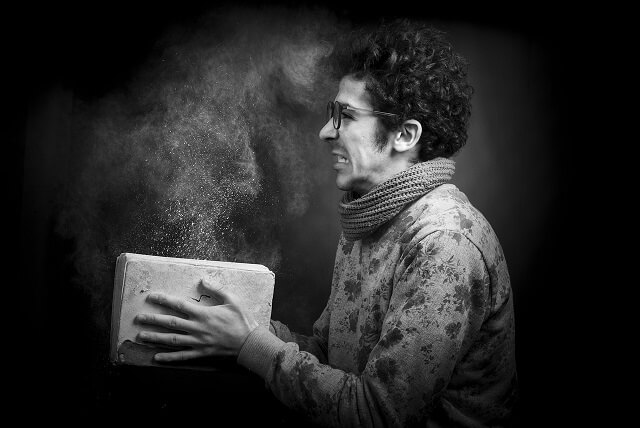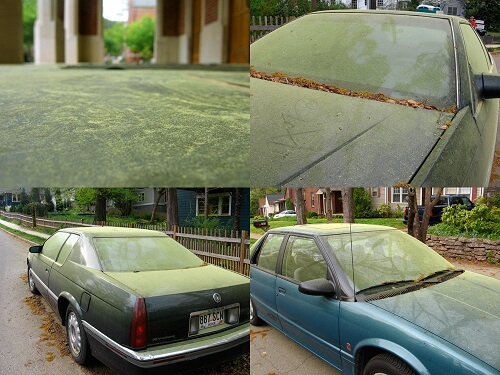
Why is Dust Grey? Here is Why Based on Science
Cleaners Talk is reader-supported. This post contains affiliate links, we may earn a commission at no additional costs to you. As an Amazon Associate we earn from qualifying purchases.
Dust is constantly building up around us. They always come back inside your house no matter how many times you clean them up. But have you ever wondered why dust is grey? Here’s why:
As a collection of small particles, dust particles randomly scatter light (because the particles are similar to or larger than the wavelengths of the scattered light) through a process known as Mie scattering, which is why dust particles appear slightly white or grey.
But what about vacuum cleaner dust? Are these particles the same? Believe it or not, not all dust is grey. In this post, let’s discover why dust is grey based on science.
Why Is Dust Almost Always Grey?
The component of dust seems to very often take on one of two colors. In most cases, airborne dust or household dust you see in your house is very often white or gray.

Household dust always appears grey.
To find the definitive answer based on Science, we did extensive research on this matter. Here's what Professor Rob Dunn, an ecologist from North Carolina State University, had to say:
“It seems without realizing it, many of our fabrics are darker, and so when you mix them all together that those fabrics collectively take on that color. Conversely, many more of our clothes are bluer than we tend to think and so very often belly button fluff tends to be blue.”
PROFESSOR ROB DUNN
North Carolina State University ecologist
So when you look in dust that is blue, or you look in dust that is grey in more detail, always what you see are the different colors. But it’s this collective manifestation of all these things together.
In other words, it’s a collection of particles of different colors mixed into one, making dust appear grey.
Not All Dust is Grey
Believe it or not, not all dust is grey.
The color of dust is determined by what the dust is collectively made of. Since most people think about grey dust while cleaning, we will make the assumption that most people are referring to household dust.
According to David Layton and Paloma Beamer, professors of environmental policy at the University of Arizona, the specific dust mix in any household differs according to climate, age of the house and the number of people who live in it — not to mention the occupants' cooking, cleaning and smoking habits.
But where does the grey dust come from?
Nearly everywhere, dust consists of some combination of shed bits of human skin, animal fur, decomposing insects, food debris, lint and organic fibers from clothes, bedding and other fabrics, tracked-in soil, soot, particulate matter from smoking and cooking, and, disturbingly, lead, arsenic and even DDT.
Therefore, the makeup of the dust in your home is probably mostly made up of dirt, skin cells, pollen, and a combination of other particles. The collective color of this mixture is what you are seeing.
If you had a more pure dust, say more pollen, then the color would be different. It would be more of a greenish-yellow color like the image below.

Pollen is not grey. It appears yellowish green.
Why is Vacuum Cleaner Dust Grey?
While vacuum cleaner dust appears grey, it is not really grey.
Each tiny particle picked up by a vacuum cleaner is not grey, but are randomly colored bits of human skin, animal fur, decomposing insects, food debris, lint and organic fibers from clothes, bedding and other fabrics, all of which when mixed together, appear grey.
If you take all of the millions of particles from your vacuum cleaner and put them under a powerful microscope, you would see brown and black dirt colorful fibers from clothing or carpet. You would also see shades of your family's hair as well as pets. Throw in various colors of plastic bits.
However, when you see them together as a mixture, the collection of dust seems grey.
Much of what is picked up by a vacuum cleaner is granular matter so fine that any light that isn’t absorbed at the surface will be scattered (just as with air). However, the particle sizes are not small enough to have the blue end of the spectrum bias seen in the atmosphere. This is what is known as Mie scattering.
Bottom Line
Now you know why dust is always grey.
Contrary to popular belief, dust is not grey. Each of the dust particles is made up of different colors but when they are mixed together into one, they appear grey collectively.
You may also be interested in: Why are dust bunnies called dust bunnies?
